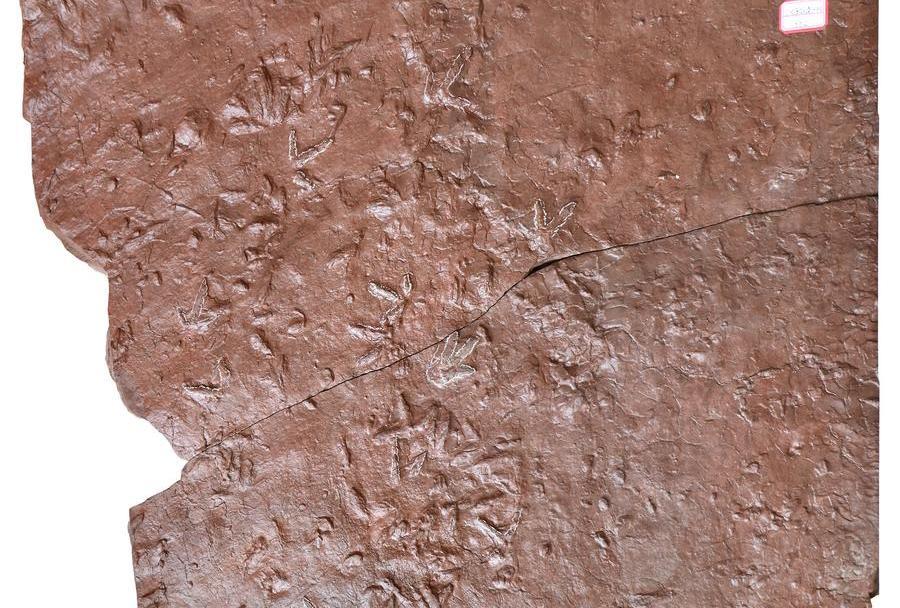
This undated photo provided by Xing Lida, a paleontologist at the China University of Geosciences, shows fossilized tracks left by prehistoric birds and turtles.
A scientific research team on Saturday revealed the discovery of fossilized tracks left by prehistoric creatures in northwest China dating back hundreds of millions of years, including tracks left by birds, turtles and dinosaurs.
The fossils were buried in red sandstone dating back to the Lower Cretaceous period in Yongjing County of the Linxia Hui Autonomous Prefecture, Gansu Province.
Between 2020 and 2022, staff from a dinosaur museum in a local Yellow River scenic area discovered a trove of six track sites. Five sites were attributed to ancient birds, including one containing turtle tracks, and another was attributed to theropod dinosaurs.
The findings of the study have been published in the journal Cretaceous Research, with scientists highlighting that the fossils have provided China's first evidence of turtle tracks, as well as evidence of the coexistence of turtles and birds.
According to co-author Li Daqing, a professor specializing in paleontology at Gansu Agricultural University, Yongjing is a renowned fossil site where scientists have unearthed numerous well-preserved dinosaur bones, footprints and other important early Cretaceous fossils dating back 145 million years.
This time, the research team discovered pairs of small and medium-sized turtle tracks that could be identified as the first exact ancient turtle tracks found in China, and they had better preservation levels and regularity than previous discoveries.
Lead researcher Xing Lida, a paleontologist at the China University of Geosciences, suggested the tracks could have been made by turtles walking along the bottom of shallow waters or swimming in them. Moreover, it was observed that some of the turtle tracks were covered by bird tracks, indicating that the tracks left by turtles were formed before those left by birds.
"This provides a vivid depiction of an ancient ecological scene: turtles moved through shallow waters, leaving their footprints. As the water level receded, the area was exposed, attracting a large number of birds to feed. Their tracks consequently intertwined with those left by the turtles," Xing said.
In the study, the bird tracks measure approximately 3 cemtimeters to 4 centimeters in length, resembling the tracks of the Koreanornis lii, a previously discovered common bird species that lived during the Cretaceous period in China.
The only track site that did not contain bird tracks was that of a symmetrical, three-toed footprint measuring 16.6 centimeters in length, which, based on its morphological characteristics, would have been made by a smaller ankylopollexian, a dinosaur clade.
The study revealed that during the era dominated by dinosaurs, four-legged animals adapted to different water depths based on their size. This finding could assist scientists in determining and categorizing ancient water depths, according to Xing.
"Moreover, it contributes to our understanding of the dinosaur fauna in Yongjing during the early Cretaceous period and offers valuable materials for the study of the area's ancient ecosystems," Xing added.
Since the late 1990s, more than 2,000 dinosaur footprints have been discovered in the region. It has recently gained media attention due to its continuous findings of dinosaur fossils.
In early August, Xing's team unveiled a collection of five small fossilized dinosaur footprints from the Cretaceous period found in the autonomous prefecture, believed to be among the smallest known dinosaur tracks worldwide.
The curator of the local dinosaur museum, You Wenze, who was also named among those who found the latest fossilized tracks, said that these discoveries have expanded the collection of dinosaur footprints and boosted the area's culture and tourism value.




